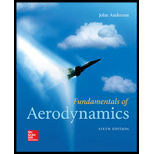
Consider the incompressible viscous flow of air between two infinitely long parallel plates separated by a distance h. The bottom plate is stationary. and the top plate is moving at the constant velocity u. in the direction of the plate. Assume that no pressure gradient exists in the flow direction.
a. Obtain an expression for the variation of velocity between the plates.
b. If
(a)
The expression for the variation of velocity between the plates.
Answer to Problem 15.1P
The expression for the variation of velocity between the plates is
Explanation of Solution
Given:
The distance between the plates is
The velocity of the top plate is
Formula used:
The expression for the pressure gradient is given as,
Here,
Calculation:
The figure (1) is showing the incompressible flow of air between two infinitely long plates,
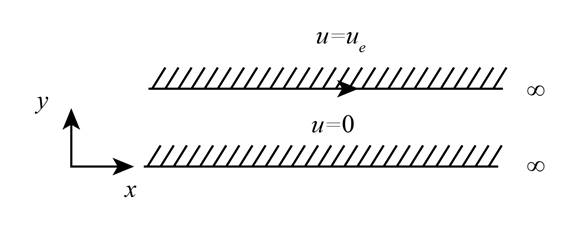
Figure (1)
The given flow is in the x direction only and the no pressure gradient in the direction of flow,
The expression for the pressure gradient is given as,
Substitute the value of pressure gradient,
Integrate the above expression,
Again integrate the above expression,
Apply boundary condition at
Substitute the values in equation (1)
At
Substitute the values in equation (1),
Substitute the values of
Conclusion:
Therefore, the expression for the variation of velocity between the plates is
(b)
The shear stress on the top and the bottom plates.
Answer to Problem 15.1P
The shear stress on the top and the bottom plates is
Explanation of Solution
Given:
The temperature of the fluid is
The velocity of the top plate is
The distance between the plates is
Formula used:
The expression to calculate the shear stress is given as,
Here,
The expression of the relation between the viscosity and the temperature is given as,
Here,
Calculation:
It is known that the value of
The expression of the relation between the viscosity and the temperature is given as,
Substitute the values in above expression
The expression to calculate the stress is given as,
Substitute the values from equation (2),
Substitute the values in above expression,
The value of shear stress is constant. Thus, the shear stress will be same on top and bottom of the plates.
Conclusion:
Therefore, the shear stress on the top and the bottom plates is
Want to see more full solutions like this?
Chapter 15 Solutions
Fundamentals of Aerodynamics
- A uniform tube is used to siphon water from the large tank. If the pressure on the outside of the tube (the atmospheric pressure) is more than 20 kPa greater than the pressure within the tube, the tube will collapse. By using Bernoulli's equation, determine the minimum value of h allowed without the siphon collapsing. The density of water is 1000 kg/m3. Hint: Since the tube is uniform the flow speed in it is constant. The exiting flow from the tube is treated as free jet. 2 m V SARA 1 4 marrow_forward2. As shown in figure below, a fluid having specific gravity of 0.88 enters the cylindrical arrangement at section 1 at 0.16 N/s. The 80 mm diameter plates are 3 mm apart. Assuming steady flow, determine the average velocity at section 1 and at section 2. Assume radial flow at B.arrow_forwardAn incompressible viscous flow is contained between two parallel plates separated from each other by distance b. The flow is caused by the movement of the bottom plate which has a velocity U, while the upper plate is fixed. The flow has zero pressure gradient in the x-direction. The velocity of the moving plate is U =7 m/s and b= 1 m. a) Determine the flow rate passing between the two plates per unit width (the width is perpendicular to the drawing plane). b) Calculate the magnitude of the rotation. c) Calculate the volumetric dilatation rate.arrow_forward
- A converging nozzle having an exit diameter of 30 mmmm is connected to the large tank (Figure 1). The absolute pressure outside the tank is 102 kPakPa. Figure 1 of 1 Part A If the temperature of the air in the tank is 20∘C∘C and the absolute pressure is 280 kPakPa, determine the mass flow from the tank.arrow_forwardQuestion : Water flows through a circular nozzle, exits into the air as a jet, and strikes a plate, as shown in the figure. The force required to hold the plate steady is 75 N. Assuming steady, frictionless, one-dimensional flow, estimate Part (a) the velocities at sections (1) and (2) and Part (b) the mercury manometer reading h.arrow_forward3. a) For the following system, determine the flow rate in m3/s. b) Determine the relative density of the manometric fluid.arrow_forward
- Air is discharged from a large tank through a convergent nozzle of 25 mm diameter. The air in the tank is at 150 kPa and temperature of 295 K.a) determine the mass flow rate when the outside barometric pressure is 100 kPa.b) What percentage change in mass flow will result if the pressure in the tank is 300 kPa for the same barometric pressure given in (a)?arrow_forwardWhen a viscous, incompressible fluid enters a pipe of radius, R, its velocity is uniform and of magnitude U0. The fluid eventually becomes fully-developed, at which point it has a parabolic velocity profile described by the equation u(r) = Umax[ 1 − ( r/R )^2 ] , where r is the radial distance measured from the center line of the pipe. Determine an expression for the ratio of the max velocity of the fully-developed pipe flow to the uniform inlet velocity, Umax/U0. The fluid is flowing steadilyarrow_forwardA conveyer belt is installed in a process industry to move the product from bottom to top. Anincompressible, viscous fluid is placed between the upper and lower belts to avoid the friction andcool down the surface of belt. The belts are aligned at an angle θ and moving in opposite directionwith constant velocities V1 and V2, as shown in figure. Assume the laminar flow with no pressuregradient and gravity acting vertically downward. Calculate:a. Velocity profile in the fluidb. Volume flow rate between the beltsc. Shear force per unit area acting on bottom belt Note: Enlist all the assumptions you have taken to solve the problem and clearly mention theboundary conditions.arrow_forward
- Carbon dioxide flows in a horizontal 100 mm wrought iron pipeline at a velocity of 3 m/s.At a point in the line a pressure gage reads 690 kPa and the temperature is 40°C. What pressureis lost as the result of friction in 30 m of this pipe? Barometric pressure is 101.3 kPa. Assumethe fluid is of constant densityarrow_forwardConsider the flow of a fluid at speed v0, through a cylindrical pipe of radius r. What would be the speedof this fluid at a point where, because of a constriction in the pipe, the fluid is confined to a cylindricalopening of radius r/4?arrow_forwardWater at a temperature of 50 °F flows through a pipe of diameter D = 0.73 in. and into a glass as shown below. Making some assumptions and using online resources to find fluid properties, Determine: a) the minimum time taken to fill a 12-oz glass (volume = 0.0125 ft3) with water if the flow in the pipe is to be laminar. Repeat the calculations if the water temperature is 140 °F. b) the maximum time taken to fill the glass if the flow is to be turbulent. Repeat the calculations if the water temperature is 140 °F.arrow_forward
 Elements Of ElectromagneticsMechanical EngineeringISBN:9780190698614Author:Sadiku, Matthew N. O.Publisher:Oxford University Press
Elements Of ElectromagneticsMechanical EngineeringISBN:9780190698614Author:Sadiku, Matthew N. O.Publisher:Oxford University Press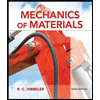 Mechanics of Materials (10th Edition)Mechanical EngineeringISBN:9780134319650Author:Russell C. HibbelerPublisher:PEARSON
Mechanics of Materials (10th Edition)Mechanical EngineeringISBN:9780134319650Author:Russell C. HibbelerPublisher:PEARSON Thermodynamics: An Engineering ApproachMechanical EngineeringISBN:9781259822674Author:Yunus A. Cengel Dr., Michael A. BolesPublisher:McGraw-Hill Education
Thermodynamics: An Engineering ApproachMechanical EngineeringISBN:9781259822674Author:Yunus A. Cengel Dr., Michael A. BolesPublisher:McGraw-Hill Education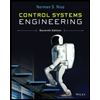 Control Systems EngineeringMechanical EngineeringISBN:9781118170519Author:Norman S. NisePublisher:WILEY
Control Systems EngineeringMechanical EngineeringISBN:9781118170519Author:Norman S. NisePublisher:WILEY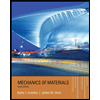 Mechanics of Materials (MindTap Course List)Mechanical EngineeringISBN:9781337093347Author:Barry J. Goodno, James M. GerePublisher:Cengage Learning
Mechanics of Materials (MindTap Course List)Mechanical EngineeringISBN:9781337093347Author:Barry J. Goodno, James M. GerePublisher:Cengage Learning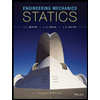 Engineering Mechanics: StaticsMechanical EngineeringISBN:9781118807330Author:James L. Meriam, L. G. Kraige, J. N. BoltonPublisher:WILEY
Engineering Mechanics: StaticsMechanical EngineeringISBN:9781118807330Author:James L. Meriam, L. G. Kraige, J. N. BoltonPublisher:WILEY





